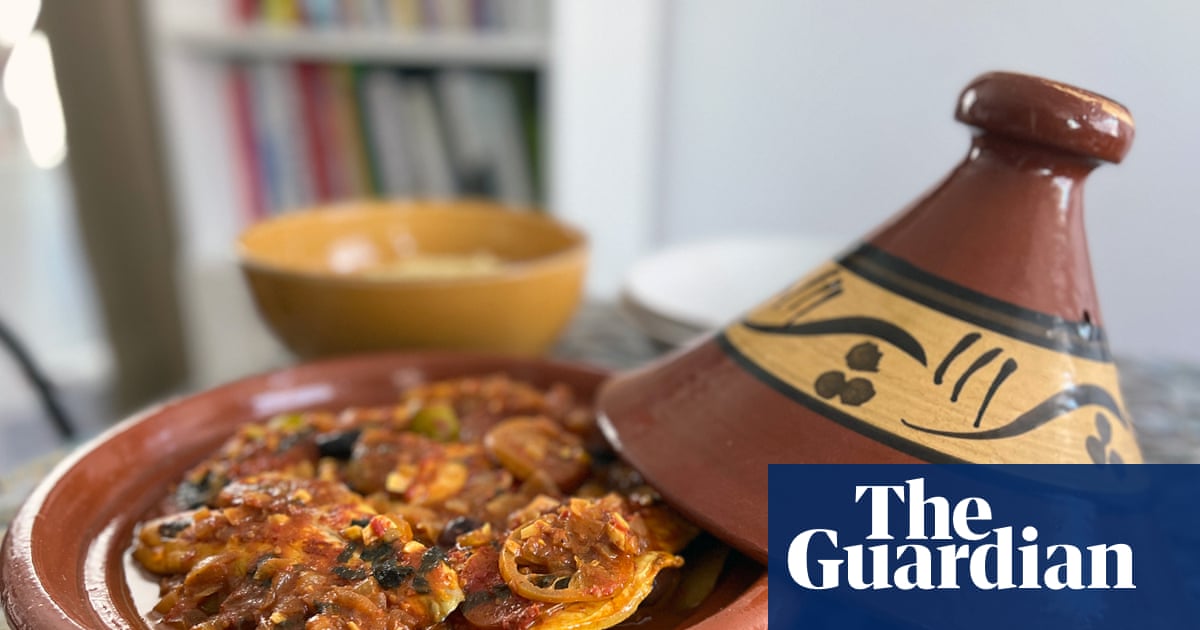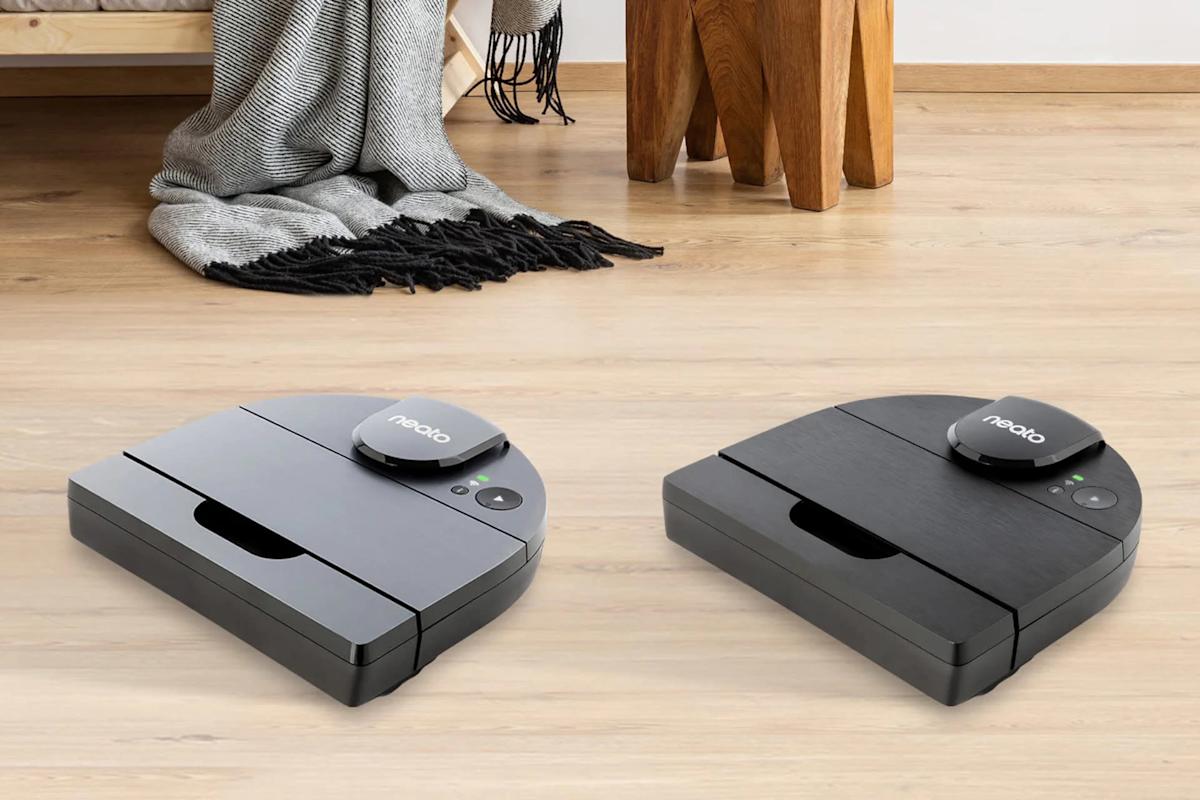Marine organisms that build tiny calcium carbonate shells are quietly doing much more than we realized, they help regulate Earth’s climate.
Researchers found that the plankton-based shell builders known as calcifying plankton – including…

Marine organisms that build tiny calcium carbonate shells are quietly doing much more than we realized, they help regulate Earth’s climate.
Researchers found that the plankton-based shell builders known as calcifying plankton – including…

The efficiency of turbine engines can be measured by…

When I travel, I don’t just want to sample new foods, I want to see how they’re made. I love peeking into kitchens and observing the daily habits and techniques of local cooks, which always include some new-to-me gadgets or implements less common in the United States. After my first trip to France, for example, I convinced myself I needed a Nespresso machine and a breadboard for morning tartines and coffee. The habit stuck.
Nowadays, if I am shopping for souvenirs, I’m likely browsing the shelves at a local culinary store to see what I can tuck into my luggage, or I am taking mental notes for what to search for when I get back home. But you don’t need to leave the country to find inspiration or get your hands on some genius culinary tools that many Americans haven’t yet embraced. Here are some of my favorites and why chefs around the world find them indispensable.
All prices current at the time of publication.
From pintxo and tapas bars to more elaborate restaurants, the fairly inexpensive and very versatile terracotta cazuela is one of the most commonly used vessels I saw in Spain’s restaurants. “I mostly use it for recipes that need gentle, consistent heat–like albóndigas en salsa, fabes con almejas, or even gambas al ajillo,” says Guillermo Varela de Limia Muñoz, chef at Cooking From Spain.
It can go from stovetop and oven directly to the table, and comes in a multitude of sizes. Grab a handful of petite ones for serving olives, nuts or condiments, medium ones for appetizers, or larger ones for making stews and casseroles, or simply serving as a tray for chips during a party.
We love crepes in our house, so I lugged a large aluminum Tefal crepe pan purchased from a French supermarket back to the states in my suitcase. “The flatness of the pan will ensure even cooking, and also allows for the use of a râteau (like a tiny wooden rake) to spread your crêpes and galettes like a pro,” says Omid Tavallai, the owner of Paris-based purveyor Emperor Norton. “It may be a specialty pan, but it’s also extremely flat, so it won’t take too much storage space in the kitchen.”
It’s no one-trick pony either; the large surface can be used as a griddle for pancakes and bacon or as a comal for heating tortillas. The induction-ready pan I bought isn’t available in the US market, but I have used this Tefal Elegance pan many times at my mother-in-law’s house on a gas hob with consistently excellent results. And because it’s nonstick, a quick hand wash with warm, soapy water is all it takes to get clean.
There is a Japanese knife for every task, and for cutting vegetables it’s a Nakiri. “The way we cut ingredients directly affects how they feel when eaten,” says Shota Nakajima, Top Chef finalist and owner of Seattle-based restaurants Taku and Kobo. “Slicing through the fibers rather than tearing or crushing them keeps vegetables crisp, helps them absorb seasoning evenly, and brings out a more delicate mouthfeel.”
Built like a miniature cleaver, its flat edge ensures full contact with the cutting board, making it perfect for straight-down, clean cuts without requiring a rocking motion (unlike western chef’s knives). The Premier Nakiri from Shun is made of 68 layers of stainless Damascus steel cladding, making it extra durable and resistant to corrosion. A full-tang blade and finished Pakkawood handle ensure optimal control, whether you’re slicing tomatoes, julienning carrots, or creating thin sheets of daikon or cucumber using a katsuramuki cut.
I grew up using the long, plastic chopsticks commonly found at Chinese restaurants, or Japanese lacquered wood chopsticks, which require careful hand-washing and drying. In Korea, metal chopsticks are more common, as they were originally used by royals and were eventually embraced by the general public. “Metal chopsticks are less porous than wood chopsticks and don’t absorb bacteria,” says SuYeon Lee, owner of Palace Cooking, a Korean cooking school in Seoul. “It’s considered more hygienic since communal eating is central to Korean culture.”
Since they are sturdy and easier to keep clean, I sought out a set immediately. While it is challenging to find flat stainless chopsticks in the US like those commonly seen in Seoul, the squarish shape of this pair is easier to handle for most people. High-quality stainless steel makes them dishwasher safe, ensuring that they will make it through the wash unscathed and sparkling clean.
According to my British friends, microwaving water for tea is a mortal sin – they insisted I needed an electric kettle. “The only way to prepare good tea is by pouring water at the correct temperature onto the loose leaves or teabag,” says Jane Pettigrew, a tea historian and the director of studies of the UK Tea Academy. “A well-designed, reliable, temperature-controlled kettle can be set to reach the most suitable temperature for each chosen tea.”
Enter the Saki Luna Kettle Pro, with its sleek, modern design and stainless steel interior. This model checks all the boxes, with a variable temperature control and seven presets that come in handy when you’re switching between hot beverages. Additionally, you can toggle the digital display between celsius and fahrenheit, depending on your preference. I use this kettle daily, for making pour-over coffee, tea, and heating water to add when cooking, so I don’t drop the temperature of what is already in the pot.
I watched street taco vendors in Puerto Vallarta and Ensenada churn out little corn tortillas to order, and I decided I needed to up my tortilla game at home. “A metal tortilla press is always the best, the heavier the better,” advises Fátima Juárez, chef and co-owner of Komal in Los Angeles. “The heavy weight will help with even distribution when pressing the masa flat into your desired thickness.”
after newsletter promotion
That said, the Masienda Tortilla Press is a hefty and sturdy version that is also wonderfully ergonomic, making it easy to press balls of masa into the perfect base for your favorite taco fillings. This press comes in a variety of festive colors, as well as solid black, if you’re like me and prefer to match your tools to your existing kitchen appliances. If you have a gas stove or barbecue grill, you can also pick up a Masienda x Made In Comal to cook up to four taco-sized tortillas at a time.
If you appreciate a simple but bold cup of coffee, you may understand why the moka pot is a fixture in many Italian homes. “It produces a coffee that satisfies Italy’s espresso-loving palate,” says Alberto Polojac, Bloom Coffee School’s director and the 2018 winner of the Professional Moka Challenge. “In many ways, it bridges the gap between home brewing and the espresso bar, bringing a taste of the Italian cafe ritual into the kitchen.”
Its compact design makes it easy to store in a kitchen lacking in storage space, and it requires no special expertise to use. Just fill the bottom chamber with water, add grounds to the coffee basket, and put it on the stove, and in minutes, you’ll have a seriously strong cup ready to go.
I haven’t used pre-ground black pepper in years, thanks to my Peugeot Paris Bistro Pepper Mill. I love its rounded shape and hefty weight; it has multiple grind options and looks great sitting on the countertop. “Everyone’s got room for a pepper mill,” says Tavallai. “Not only can you have freshly ground pepper on top of your dishes, you can choose what kind of pepper you want to fill your mill with. Kampot, Penja, Tellicherry, the world – or at least the global south – is your oyster.”
I bought the walnut finish version 13 years ago, and though the wood finish is a bit worn, its mechanism – backed by a lifetime warranty – is still going strong. Since I keep multiple types of black pepper on hand, I recently purchased the same model, this time in durable stainless steel.
Named after the North African stew that it is intended to cook, the Moroccan Cooking Tagine has been around for more than 2,000 years. “It isn’t just a cooking vessel, it’s a symbol of how we approach food: slow, generous, and deeply layered in flavor,” says Nargisse Benkabbou, chef and author of Casablanca: My Moroccan Food. Like a Dutch oven, it maintains heat well and keeps moisture and aromas contained during the cooking process.
Moroccan Cooking Tagine For Two
When looking for a tagine, take note of its construction. According to Benkabbou, it needs a snug-fitting lid to trap steam, and the clay must be dense yet slightly porous, allowing the food to cook gently and evenly while keeping moisture in. This modern version doesn’t require the same curing and care as its terracotta cousin, though either option makes for a beautiful serving presentation – the conical lid helps keep food warm and also adds a little flourish when removed to reveal its contents.
Emile Henry French Ceramic Tagine
Available in a multitude of designs, tea towels are one of my favorite souvenirs to bring home from France. Made of cotton jacquard, they are both beautiful and functional. “Torchons are plentiful in any professional French kitchen and should be at home,” says Tavallai. “They’re inexpensive and versatile, and having a neatly folded stack of them within easy reach makes any kitchen feel that much more organized.” Whether I’m drying dishes, wiping hands, covering rising bread dough or grasping a hot lid handle, I use them in some capacity every single day. Even with frequent laundering, they keep their color and shape nicely for years on end.

Starting soon, Neato robovac owners will no longer be able to control their devices using the app. Neato Robotics, which shut down in 2023 due to declining sales, has notified customers that “cloud services are being phased out during Q4 2025,”…

Actor Sumeet Raghavan, known for playing Sahil Sarabhai in the cult sitcom Sarabhai vs Sarabhai, paid an emotional tribute to his late co-star Satish Shah, who passed away due to kidney failure. Taking to social media, Sumeet posted a heartfelt…

McGrath RentCorp (MGRC) reported forecasted earnings growth of 9.27% per year and revenue growth of 4.6% per year, both of which trail the US market’s broader expectations of 15.5% and 10%, respectively. The company’s net profit margin decreased from 25.3% last year to 15.6%, following a period of strong historical earnings growth that averaged 20.3% per year over the past five years. Most recently, it recorded negative year-over-year earnings growth. Despite these recent declines, MGRC is trading near fair value with a P/E ratio of 19.4x, below industry and peer averages, and continues to offer high-quality earnings along with an appealing dividend for investors.
See our full analysis for McGrath RentCorp.
Now, let’s see how this latest crop of numbers lines up against the widely held narratives. This provides a chance to test which stories get confirmed and which offer new surprises.
See what the community is saying about McGrath RentCorp
Utilization in key rental segments fell, with Mobile Modular dropping to 73.7% from 78.4% and Portable Storage down to 61.1% from 66.1%. This highlights cyclical stress in the company’s core markets.
Bears argue that ongoing declines in utilization and weaker demand could make future growth targets harder to achieve, especially as fleet underinvestment and unpredictable order flow may limit revenue momentum.
Persistently lower utilization puts pressure on recurring rental revenues and reduces operating leverage, a risk factor cited in analysts’ consensus view.
If the recent segment softness continues, consolidated revenue growth could trend below the company’s historical averages. This underlines revenue stability concerns.
Selling and general administrative expenses have increased as the company pushes hiring and invests in digital infrastructure. This raises the risk that operating costs will remain elevated if topline growth does not accelerate.
Analysts’ consensus view sees operational investment as a double-edged sword, likely improving long-term efficiency and margin potential but threatening short-term EBITDA margin compression if demand softens.
Margin trajectory is a key debate point. While technology upgrades may help expand margins, SG&A ramp-up combined with declining utilization can offset these gains in the near-term.
This margin tension is central to the narrative that MGRC’s position is attractive only if growth and efficiency materialize ahead of the cost increases. Otherwise, margins could lag peers.

Rejlers (OM:REJL B) reported earnings growth of just 1.8% this year, a notable deceleration from its five-year annual average of 25.3%. Despite a lower net profit margin at 4.6% and a significant one-off loss of SEK74.2 million in the last 12 months to 30th September, 2025, the company’s forecast earnings and revenue growth rates of 17.54% and 5.2% per year respectively both outpace the broader Swedish market. Investors will be weighing these robust growth projections against the softer profitability trends and non-recurring expenses that have affected earnings quality.
See our full analysis for Rejlers.
Next, we will be putting these headline results in direct context with the major narratives followed by the Simply Wall St community. We will highlight where expectations hold up and where the numbers challenge the consensus story.
Curious how numbers become stories that shape markets? Explore Community Narratives
Rejlers’ earnings quality was affected by a material one-off loss of SEK74.2 million in the 12 months to 30th September, 2025, which is not expected to recur but significantly reduced reported profitability in this period.
Heavily supporting the bullish case for strong earnings growth ahead, the company is still forecast to grow earnings at 17.54% per year and revenue at 5.2% per year. Both figures are well above Swedish market averages.
Bulls highlight that this impressive growth trajectory stands out despite headline results being held back by a non-recurring charge.
The broad consensus among optimists is that future profitability should normalize if such one-off events do not repeat, allowing underlying momentum to show through.
The current net profit margin has slipped to 4.6% from 4.9% last year, reflecting some pressure on underlying profitability that investors will want to see reverse in coming periods.
Challenges to the narrative of operational resilience emerge as this margin softness, combined with muted 1.8% earnings growth, serves as a reality check for investors expecting a swift rebound.
This margin compression limits near-term optimism even as top-line forecasts remain strong, giving cautious investors reason to monitor cost control and project delivery closely.
Some observers point to the impact of non-recurring expenses as a key reason for the margin dip, but emphasize that sustained improvement will require more than just their absence.
At SEK198.20, Rejlers shares are trading at a deep 63% discount to the estimated DCF fair value of SEK529.11, even though the stock’s price-to-earnings ratio of 20.8x sits slightly below the broader Professional Services industry average but above peers.
This wide disconnect between price and DCF fair value intensifies investor focus on whether growth expectations are realistic, or if persistent profit headwinds will keep the valuation gap open.
The relatively full P/E versus peers shows that investors are already paying up for earnings quality, yet the current price implies skepticism about sustaining future outperformance.
Ultimately, many investors will see the margin of safety at current levels as compelling, provided that forecast growth materializes and one-off expenses do not become a pattern.

ATHENS, Greece — Popular Greek singer-songwriter Dionysis Savvopoulos was buried Saturday at Athens’ First Cemetery in a state-sponsored funeral, four days after his death at age 80.
Savvopoulos had died of a heart attack after battling cancer…